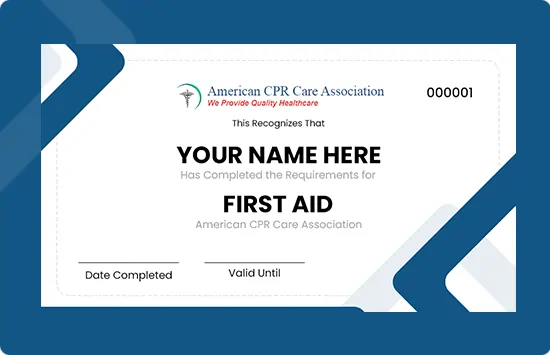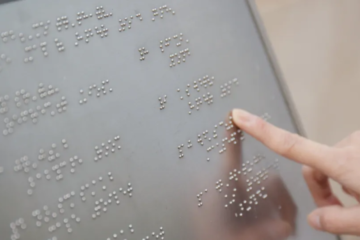Cardiopulmonary resuscitation (CPR) is a vital lifesaving skill that can significantly increase the chances of survival in an emergency. A critical aspect of performing effective CPR is maintaining the correct compression rate. Understanding the importance of this precise rate and how to measure and sustain it can empower responders to administer life-saving care during critical moments. By focusing on these fundamentals, rescuers can maximize their effectiveness in providing immediate assistance when it matters most.
This article discusses the importance of measuring and sustaining the optimal CPR compression rate to ensure the best possible care for a patient in an emergency. You will also learn how you can maintain and measure this rate.
Importance of CPR compression rate
The ideal rate refers to the optimal frequency of chest compressions per minute. The suggested rate is between 100 and 120 per minute. This maintains the heart’s pumping efficiency and blood flow throughout the body. However, it is vital to understand why the compression rate is so significant before focusing on quantifying and sustaining it.
The compression rate influences the distribution of oxygenated blood in the body. If the chest is not compressed firmly enough and at an appropriate rate, vital organs do not receive enough oxygen. This can have long-term effects besides reducing the chances of survival.
Maintaining the proper CPR compression rate allows the heart to continue pumping blood. Thus, the patient can survive until they get professional medical attention.
How to maintain proper compression rate
Achieving the correct compression rate during CPR takes practice, concentration, and good hand-eye coordination. Follow these tips to perform effective chest compressions:
- Positioning
Position the palm of one hand over the center of the person’s chest, slightly below the nipples. Put the second hand on the first hand and interlock the fingers.
- Depth of compressions
Compress the chest at least 2 inches but no more than 2.4 inches for adults, 1.5 inches for infants, and up to 2 inches for children. Give the chest time to return to its original position before performing the subsequent compression.
When performing chest compressions, the time spent compressing the chest and allowing it to recoil should be equal. This ensures that blood circulation is optimized, maximizing the effectiveness of CPR in maintaining vital organ perfusion. Minimizing interruptions to maintain blood flow to the heart and the brain increases the chances of successful resuscitation.
- Rate
Keep the CPR compression rate between 100 and 120 per minute. To achieve the correct rhythm, perform compressions with the movement of your hands. You can keep counting in your mind to maintain the compression rhythm. If you have CPR training and are confident, begin CPR by delivering 30 chest compressions before administering two rescue breaths.
What are the tools for measuring CPR compression rate?
There are several devices that trainees, healthcare providers, and lay rescuers use to measure the compression rate during CPR. These tools include:
- CPR feedback devices
These devices give real-time feedback on chest compressions’ rate and depth in real-time. They usually include a chest sensor to apply to the patient and an indicator or screen showing the compression rate per minute.
- Manikins with built-in feedback systems
Other equipment includes manikins used for training and feedback systems to help measure the compression rate. These manikins offer feedback on the quality and depth of chest compressions.
- Smartphone apps
Several apps can monitor and track the CPR compression rate. These apps mostly rely on the phone’s accelerometer to determine the rate and frequency of chest compressions so that you can get feedback on the compression rate in real time.
Benefits of using tools for measuring CPR compression rate
Using tools to measure compression rate during CPR offers numerous advantages that enhance the precision and effectiveness of chest compressions. These devices are crucial in ensuring accurate administration and provide several benefits:
- Accuracy
These devices can correctly measure the compression rate to ensure that the rescuers are doing CPR correctly.
- Training
CPR feedback devices and training manikins with feedback enable you to perform CPR at the correct compression rate during CPR training and in real life. Properly trained individuals can correctly administer chest compressions at an ideal rate.
- Real-time feedback
These tools include real-time feedback that enables you to change techniques to improve patient outcomes. Such feedback can help you act decisively in an emergency.
- Saves time
Having tools to monitor compressions saves valuable time in medical crises like cardiac arrest. Timely help using the tools can help extend the person’s survival.
Conclusion
Understanding how to check and ensure that the CPR compression rate is within the correct range is always essential. By doing so, you can help save lives during emergencies. When you understand the compression rate and apply the proper techniques, you can avoid errors and help a person in need to the best of your abilities. Remember, every second matters when performing CPR. Enrolling in a certification or refresher course can help refine your CPR techniques and prepare you to handle cardiac emergencies.



